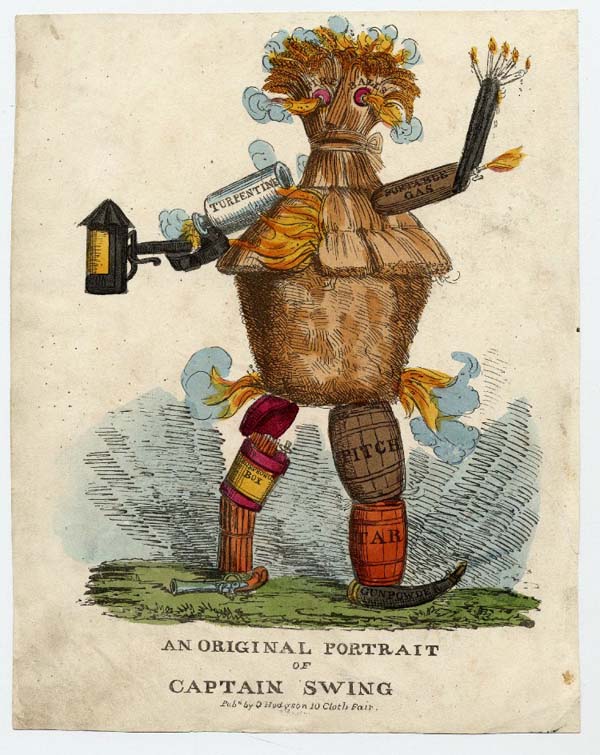One feature of the Old Poor Law which attracted criticism was the practice (adopted by some parishes) of using the able-bodied poor as a pool of cheap labour. People who did not have enough work might be sent around to different employers in a parish to be given occupation (with a daily wage being paid partly or wholly out of the poor rates). Alternatively the workhouse poor might be sent out of the house each day and allocated to specific employment where their pay was then given to the parish. These types of work for the poor were often deprecated, for reducing the wages of the non-parish poor and/or for giving some employers unfair access to cheap or free labour.
Ninfield parish is important for our project, but not just because it has some surviving overseers’ vouchers. In fact the number of vouchers is minimal, unusually for East Sussex, but it did have a very rigorous approach to setting the poor to work. From at least 1821 and possibly earlier, the poor of Ninfield workhouse were listed and systematically allocated to work for parish landowners, in direct proportion to the value rate-payers’ parish property. In other words, wealthy residents could expect to be given paupers to employ, and were required to pay a going rate for the work completed. This ‘pay’ was collected by the parish officers to offset the cost of accommodating the workhouse inmates.
Who were the workhouse poor, and what work did they do? Ninfield was determined to make the most of its human resources, and typically included children in the work rota. The workhouse population was dominated by ‘boys’ rather than adult men or girls/women, which may have reflected a parish policy of control (ie to house young, unoccupied and potentially-disruptive males). Work included hop-picking, sometimes allocated to girls, and bark-shaving (which could be very heavy work).
This must all have made an impact on the poor who needed to seek relief in Ninfield, but it probably made an impression on others including the parish officers. One overseer in particular seems to have taken his experiences in Ninfield and applied them elsewhere with dramatic effect.
Thomas Abell was a small-scale farmer who took on the job of paid overseer of the poor in Ninfield in 1825: he later took on the same job in Brede. It seems likely that he transplanted the strict work ethic of his first parish to his second, and to have added some severity of his own. We know this because his habits in working the poor (and their consequences) featured in the British press in the autumn of 1830.

The newspapers ran a lot of stories in 1830 about the exploits of the fictional ‘Captain Swing’ who was credited with inspiring rural labourers to riot against their working conditions. Paid overseers of the poor were particularly targeted by rioters, and Thomas Abell was one of the men who felt the backlash. He was said to have worked the poor in Brede in punishing and degrading ways, such as compelling them to drag a cart (loaded with wood) to a wharf some miles away: therefore we can see why, when rioting reached the parish, Abell was forcibly put on the Brede parish cart with a noose around his neck and hauled to the parish boundary by a determined group of poor women.
Abell might have richly deserved this humiliating treatment, but in the longer term the linkage of records at Ninfield with the later newspaper reports gives us further insight into the careers of parish officers, which have been opaque for so long: violence at Brede had its origins in another parish’s determination to work the poor.
Sources: The Keep, PAR 430/12/1/1, Ninfield vestry book 1821-3; PAR 430/31/1/3-4 Ninfield pauper ledgers 1821-7; PAR 430/31/3/1-3 Ninfield workhouse work books 1825-7; PAR 430/31/7/1 Ninfield overseers’ notebook 1828-9; PAR 430/37/4/1-2 Ninfield workhouse inventories 1829; Morning Post 11 November 1830 (and other newspapers thereafter).